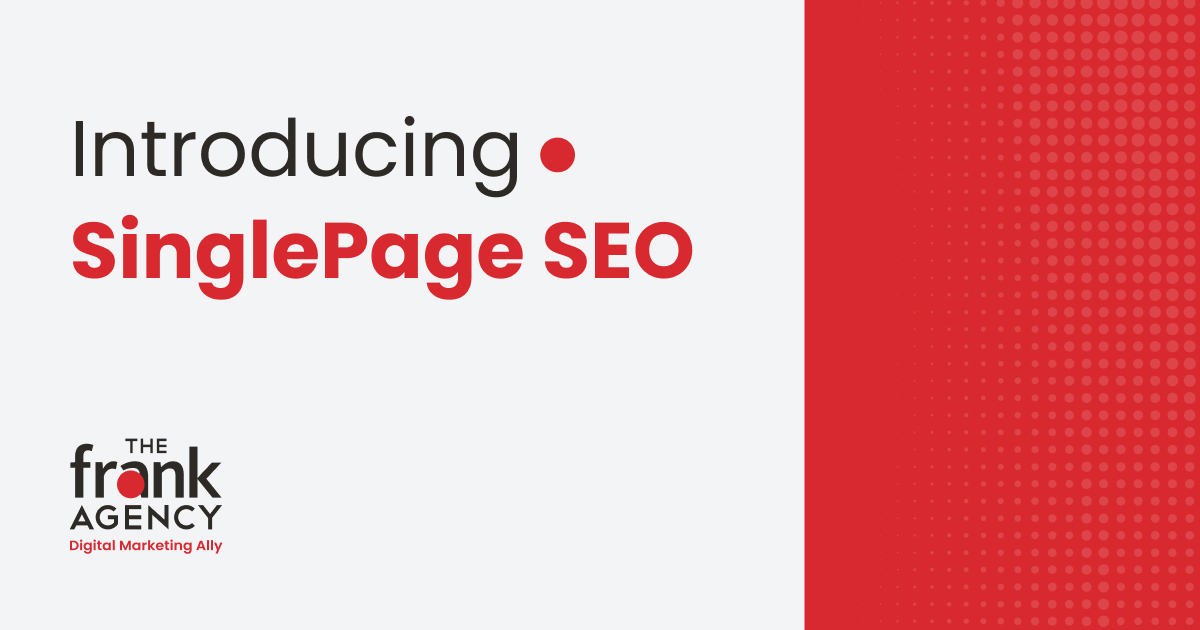On Tuesday, AdWords professionals from around the world tuned in to Google’s Performance Summit to hear about the newest changes that Google will be bringing to the AdWords experience.
According to stats provided at the summit, trillions of searches are happening on Google every year, and over half of those searches are occurring on smartphones and tablets. Because mobile has had such an explosion in traffic and usage, Google has been rethinking how AdWords works from the ground-up. This includes everything from text and display creative to bidding options, including changes to the way that we actually interact with the AdWords platform.
Text Ads
Google is always testing and iterating on text ad layouts, with the goal of improving click-through rates and the user experience. A couple of months ago they even removed the right-hand side ads from the desktop search results to bring a more seamless experience for Google Search on different devices.
The changes that are expected to rollout to everyone in Q3 will increase the character limits available in our text ads by almost 50%. Early testing shows that these expanded text ads can increase click-through rates as much as 20%! This is a very exciting change to the folks here at team frank, as we’ll have so much more room to test messaging on behalf of our clients. The thing we are the most interested in testing is adding calls-to-action (CTAs) in the headlines of our ads, instead of needing to rely solely on the description lines.
Here is a look at the specific changes in character limits:
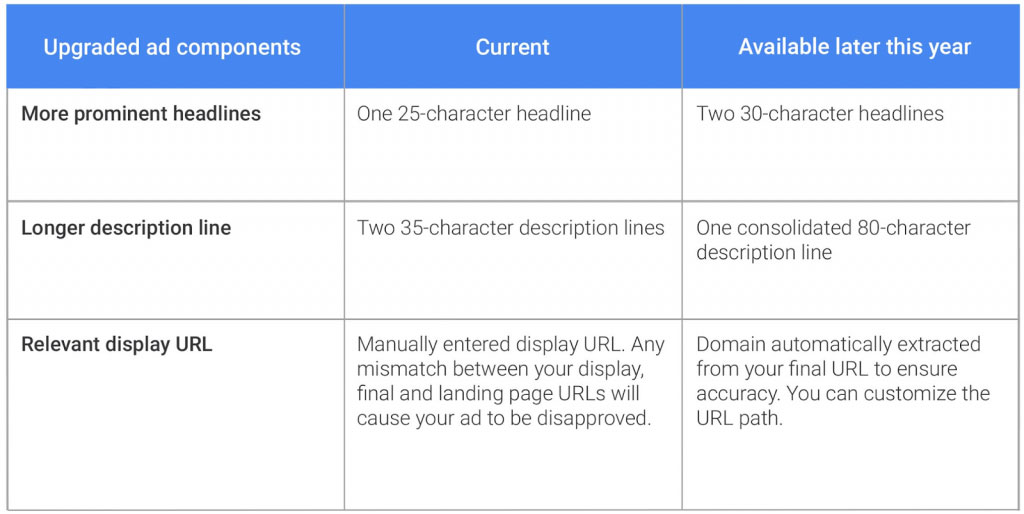
This change is great news for users of AdWords, but continues to put more pressure on SEO, as Google continues to implement changes that direct a user towards paid listings over organic.
Display Ads
Creating all available ad sizes within the Google Display Network (GDN) can be time- and cost-prohibitive as there are more than 20 unique sizes. Because of this, Google is rolling out a new responsive ad format. This format will allow you to provide a headline, description, image, and a URL, and will automatically design responsive ads to fit the content of any web pages in the GDN.
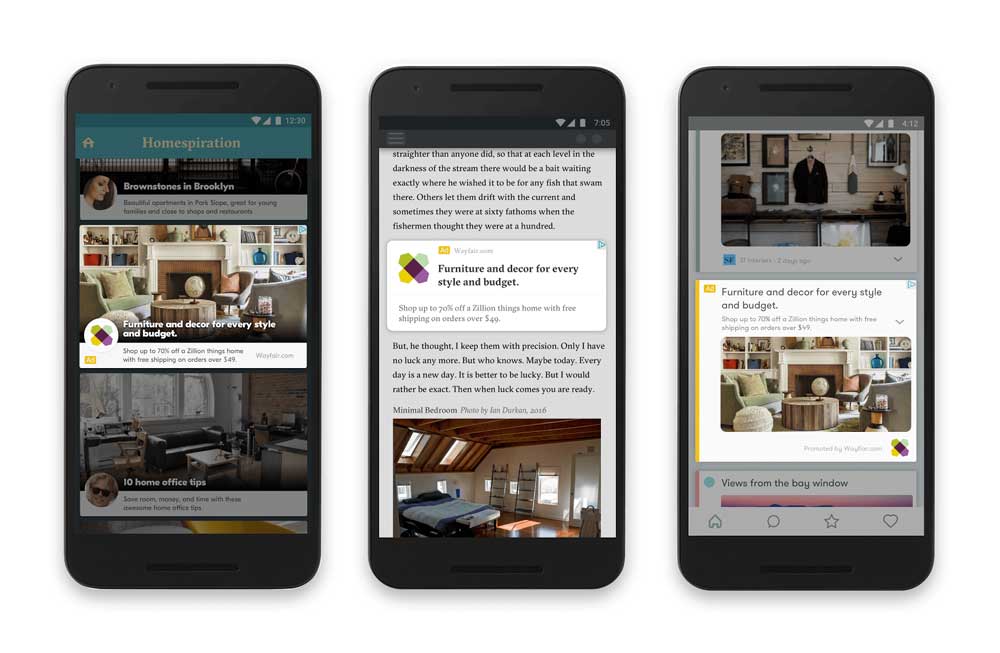
This is a welcome addition to our toolbox but is likely not something that we will take advantage of for most clients due to the need for all creative to be on-brand and approved by our clients.
Along with the new responsive display ads, Google is also going to be giving us access to additional display ad exchanges, which will greatly increase the reach of remarketing campaigns. This will be a great way to increase the reach of our remarketing campaigns beyond just Google’s display network.
Bid Adjustments
In a few short months we will finally be able to set bid adjustments by device type (desktop, mobile and tablet)! Previously we could only make bid adjustments for mobile, with desktop and tablet being strictly tied to the base bid we set for a keyword.
This is a change that we’ve been requesting ever since Enhanced Campaigns rolled out a few years ago, and we should be able to make major ongoing improvements to campaigns we manage on behalf of our clients. In almost every single campaign that we manage, we see differing performance between the three devices Google gives us data for, and it will be extremely beneficial for our team to finally be able to make optimizations using that data.
Google is also increasing the range with which we can increase and decrease bids. We will now be able to increase bids up to +900%, and decrease bids down to -100%. Previously we could not completely eliminate a device, because the maximum negative bid adjustment was -90%.
Currently the bid that we set for a keyword is considered the base bid, and we can then modify bids for smartphones (mobile) up or down based on performance. With the new device bidding options, we will actually be able to choose the device that our base bid is applied to, and then apply bid adjustments to the other two remaining devices. This will allow us to select the device type that is most important to our clients’ business to have our base bids applied to, and then optimize out from that starting point.
Google Maps
According to stats provided at the summit, nearly 1/3 of all mobile searches in Google are related to a location. As people continue to use mobile as a guide for daily activities, there is increased opportunity to get in front of a prospect at the right time and right place to convert them into a customer.
You’ve probably noticed that text ads have been showing up in the Google Maps experience on both mobile and desktop for quite a while. This works for our ads as long as we have the location extension activated in the campaign. Like with everything they do, Google is continuing to test new ad formats in the Google Maps experience, and what they showed us this week was pretty cool!
The format that they are currently testing in the Maps experience is called Promoted Pins, and they appear on the map near you or along your route. These promoted pins appear to show up unrelated to searches you are performing in the Google Maps interface. You can see in Google’s example below that the promoted pin is displaying on the map when no actual query has been entered.
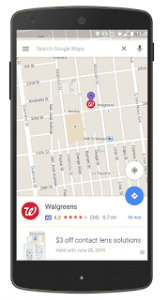
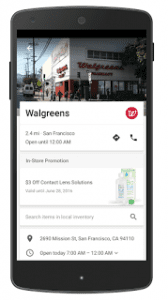
What This Means for Our Clients
Many of the changes that were announced this week have been requested by our team dozens of times in recent years, because they only serve to increase the control we have over getting our clients’ ads in front of the right prospect at the right time.
The changes to bid adjustments and increased text ad space will be especially useful in helping us get greater results out of the campaigns we are running. Several of our clients are already entered in the beta for increased text ad space, so we are currently working through the process of creating new ad copy.
The tests that are ongoing in Google Map ad formats will be something that we keep a very close eye on for our clients with a brick-and-mortar presence. Like everything else that we do for you, these new ad formats could be a great way for us to increase foot traffic to your locations!


